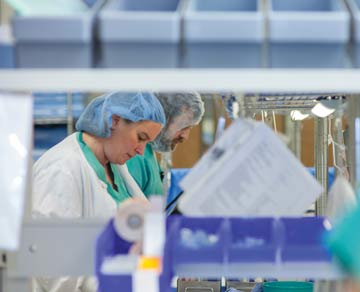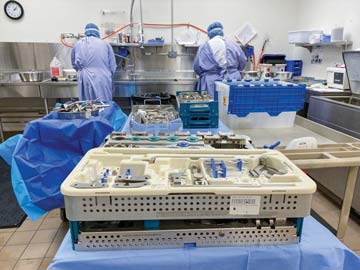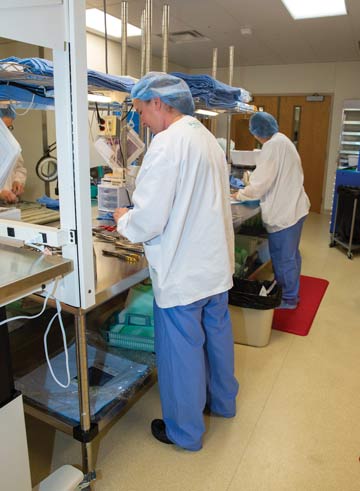Those are big solutions to a layered and complex problem, but you can make a difference in your facility by spending time in the sterile processing department and finding solutions within your own space.
- Assess the process. Analyze every aspect of the reprocessing cycle, looking for obvious signs of waste, over-production and wasted movements. Gather everyone involved in the process, from surgeons to reprocessing techs, because
each of them thinks they know exactly what everybody else is doing, but can’t know for certain until they all look at the flow of instruments together. Sit in a room with sticky notes or a whiteboard and literally note each step
of the process, however seemingly small you think an aspect might be. Ask everyone in the room to describe exactly what they do and what part of the process they own.
“It never ceases to amaze me what happens when you get all of these people in the same room and start visually assessing the process,” says Rachel Mandel, MD, MHA, an independent healthcare consultant based in Washington, D.C. “People
look at each other and say, ‘I didn’t know that you did all that.’”
When people from different departments and roles start talking, they break down silos and begin to understand how the entire instrument care process works and how their roles fit into the big picture.
“The people who do the work are the subject matter experts who know what their processes are,” says Dr. Mandel. “They just need somebody to help them change their way of thinking, the way that they look at a problem and how they
can solve it.
“Respect the opinions of the people who are doing the work. It’s their expertise that’s crucial to driving the changes that will result in real improvement, and they’re the ones who will sustain it.” • Build
a bond. There’s a disconnect between the operating room and central sterile because the 2 sides might not appreciate what the other ones do and go through on a daily basis. You can bridge the communication and culture gap by looking
at Dr. Nichol for inspiration.
“Not every surgeon is willing to walk through sterile processing to see how it really works,” says Mr. Beakes. “That’s magic, and it doesn’t happen everywhere. It’s those humble leaders who want to know how
they can improve the jobs of $15-per-hour techs who will change health care.”
Have staff members from each area walk in the other’s shoes for a day, so they gain an appreciation for the responsibilities they have and the pressures they face. “If both groups can see that and appreciate how much they depend on
each other, it really helps to develop the teamwork needed to keep instrument flow going,” says Dr. Mandel.
Efforts to improve the performance of sterile processing will fail if you don’t address related issues in the OR. For example, pre-treating instruments with enzymatic cleaner immediately after they’re used in the OR keeps bioburden
from hardening and hinged tools from locking up.
“That’s an enormous help to the sterile processing staff, who work extremely hard to decontaminate instruments before sterilization,” says Mr. Beakes.
.svg?sfvrsn=be606e78_3)



.svg?sfvrsn=56b2f850_5)